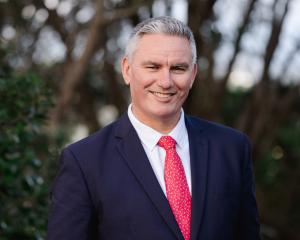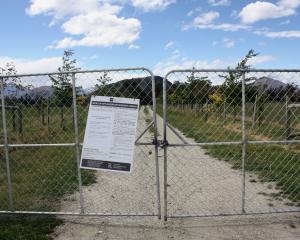
In August, the Office of the Auditor-general raised "prudence issues" over the size of the debt, estimated in the council's 10-year plan to balloon to $400 million by 2019.
The biggest chunk of the proposed $167.8 million savings was in water-demand management, with council looking to axe $72.4 million from the forecast debt.
"You don't give a fat guy a bigger belt. You put him on a diet," council deputy chief executive and finance manager Stewart Burns said yesterday, referring to "serious" water leakage in Queenstown, which he put down to poor connections and broken pipes.
High water consumption in Wanaka was also a pressing issue and both towns' usage was described as "very high" compared with other water-supply schemes around New Zealand.
"In Queenstown and Wanaka we are performing rather poorly in our consumption," Mr Burns said.
Figures showed Queenstown's water consumption was matched at a nearly 50:50 ratio by its leakage.
"In Queenstown, we have a serious water leakage issue compared with the rest of the country," Mr Burns said.
The idea "an unrestricted water supply" existed near lakes needed to be remedied by reducing water demand rather than increasing supply for projected population growth, he said.
Tom Lucas, an infrastructure consultant employed by council, said savings made in water management would ultimately trickle down to other areas earmarked for savings - $65.8 million from a revised cost estimate system, $22 million from a revised community services programme and $6.9 million in changes to the 2010-11 annual plan.
"The significant savings to be found in water-demand management can only be achieved if targets for leakage and consumption reductions are met," Mr Lucas said.
He said the current 10-year plan was based on the assumption council would continue to supply increasing water demand.
"We want to try and contain usage to its current levels, which would mean we could reduce the size of capital works or defer the building of new infrastructure," he said.
Reprioritising infrastructure projects highlighted a further $55.4 million of projects considered unlikely to proceed and $67.5 million of projects needing further scrutiny.
Mr Lucas said eliminating these projects could reduce debt by $90 million.
Mr Lucas was speaking to the capital works projects review committee comprising Mr Burns, Mayor of Queenstown Clive Geddes, deputy mayor John S. Wilson, council chief executive Debra Lawson and councillors John Mann, Vanessa van Uden, John Mann and Leigh Overton.
A detailed report on the progress of the review will be presented at a full council meeting on Wednesday.












